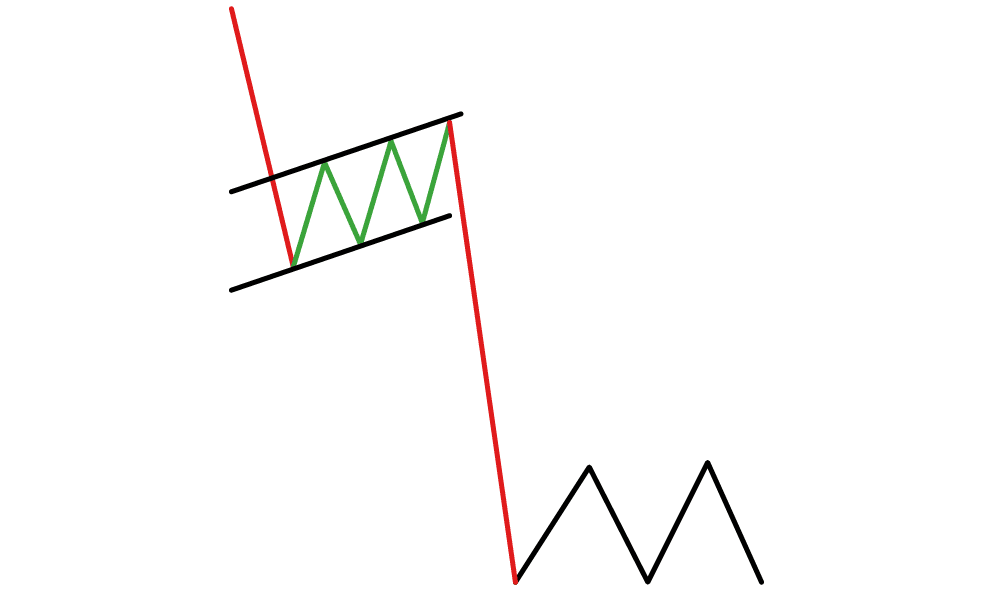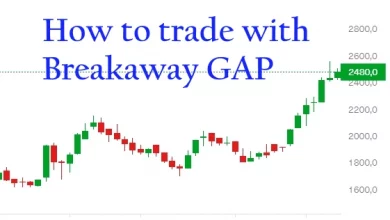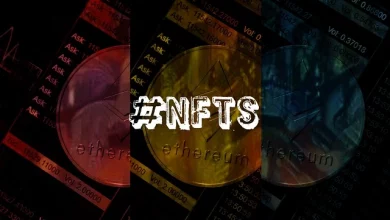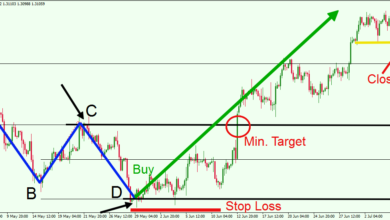
Table of contents
What does a bullish and bearish market mean?
When it comes to international financial markets, including cryptocurrencies, there are always participants who sell and who buy – they define bull and bearish market sentiments. The number of the first and second on the exchange is constantly changing, which leads to a change in trends, and a fall in the asset price if sellers prevail on the exchange, or its growth if buyers outperform.
The constant struggle between bullish vs bearish (buyers and sellers) on the stock exchanges is reflected in the price charts as a burst of downs or ups in the price line.
Bears are exchange participants who sell an asset or play short. Bearish means a market dominated by these participants.
Why are such participants called bears?
If you look at the behavior of this animal in nature during an attack, you can see that it beats with its paw from top to bottom, as if pressing an opponent to the ground. Those market participants who sell an asset do the same, they put pressure on the price with sales.
On a bear market, sellers are often more aggressive than during periods of buying activity. The rate of currencies, stocks or other financial instruments that exchange participants trade in a bear market collapses faster, and the price after such strong sales recovers levels for a long time.
Bears tend to be more active after strong negative news. For example, natural disasters, political or economic crises always lead to sales of national currencies. A similar situation was observed in 2008 during the global financial crisis, when the US dollar depreciated greatly due to the growth in the number of active sellers on the currency exchange.
Any trader can make money on a bull market, but bear markets are more insidious and require some knowledge to trade.
How to recognize the start of a downtrend? Bearish Flag is the key
The Bearish Flag is a popular pattern used by technical traders in various markets to identify bearish meaning in stock market.
A bearish flag is a technical pattern that implies an extension / continuation of an existing downtrend. The formation of a bearish flag occurs through an initial strong downtrend followed by a consolidation with an upward bias (see image above). The strong downward movement is called the “flagpole” and the consolidation represents the “flag” itself.
How to identify a bearish flag pattern on a chart?

Recognizing a bearish flag is easy enough if you know the theoretical background. It is important that the bearish flag appears in all financial markets, including crypto. It consists of three parts:
- First you need to find a flagpole, which is presented in the form of a fall in the course. This decline in the asset price can be steep or slow and reflects the general nature of the trend.
- The second element is the period of consolidation after the completion of the initial price decline. During this period, the rate tends to rise slowly, canceling out some of the original correction.
- After the price starts to decline again, traders determine the target breakout point – this is the potential value of the rate for taking profit on the trade.
As a rule, a methodology is applied according to which the subsequent downward movement is approximately equal to the flagpole (the initial fall in price). It is only necessary to project this segment from the breakout point.
Hence, in order to define the Bearish Flag, you should notice a prior downtrend (flagpole), then – consolidation with an upward slope (flag).
If the bullish retracement exceeds 50%, it means that you are unlikely to have a flag pattern in front of you. Ideally, the consolidation bounce should not exceed 38%.
Entry is made at the top of the flag or at the breakout point of the lower level of the price channel (yellow circles on the chart below). Price falls by the length of the flagpole – this is the target breakout level.
5 ways to make money in the bearish cryptocurrency market
1. Study cryptocurrency trends and understand the main indicators
The best way to deal with bullish and bearish market volatility is to prepare carefully. While others start panicking and make rash decisions, you should not be guided by emotions – better conduct a technical analysis of the market situation.
According to a 2018 study by LinkedIn and Ipsos, millennials pay a lot of attention to social media information, personal experiences with businesses, and advice from family and friends when making investment decisions. While all of these factors should not be completely ignored, they cannot be considered the best indicators of cryptocurrency behavior.
Study news, changes in legislation and regulation, as well as the actions of key players in the cryptocurrency market.
For example, reports were released on June 9 stating that the US Commodity Futures Trading Commission had required several cryptocurrency exchanges to provide trading data in order to investigate the possibility of manipulating digital currencies. This caused a serious bearish stock market over the next 24 hours, but was not a cause for alarm by itself.
Instead of approaching investments from a subjective standpoint, learn the methods of technical analysis. For example, such a useful tool as a moving average of a currency shows its average rate over a certain period of time.
Moving average will help you get a comprehensive picture of the trends of the cryptocurrency you are interested in, and you will not be distracted by random fluctuations in its rate.
2. Diversify asset types and investment strategies
Portfolio diversification is important in any situation, but especially necessary during a bear market. When it comes to cryptocurrencies, many millennials see them as a great asset to diversify. In fact, 20% perceive cryptocurrencies as a hedge against the collapse of traditional assets.
While most investors perceive cryptocurrencies as a good addition to a portfolio of traditional assets like stocks and bonds, many of them forget about the need to diversify these digital assets themselves. Meanwhile, there are all sorts of different types of cryptocurrency investments, which differ greatly from each other in the degree of risk and prospects.
Here are the top crypto investments to include in your portfolio even during bearish crypto market:
- Tokens. Build a set of trusted tokens such as Bitcoin and Ether, and a few altcoins with good growth potential.
- Tokenized Assets. Traditional asset classes such as real estate are quickly tokenized, which increases their liquidity and makes them more accessible to retail investors, while maintaining the same potential for stable growth.
- Initial token offerings. ICOs are the most risky crypto investments. Study everything thoroughly and invest only in tokens from companies with a reliable reputation and a clear business model that explains exactly how their project will benefit investors.
3. Divide investments into short-term and long-term
When talking about asset diversification, remember that your portfolio should include both short-term and long-term investments.
If we compare trading on bullish vs bearish market, most crypto investments should be long-term in a bear market, this does not mean that you will not have the opportunity to benefit in the short run. For example, there is such a risky strategy as scalping, which will allow you to take advantage of small changes in the rate and make a profit in a bear market.
Choose investments that seem the most acceptable to you in terms of risk, but consider that at least a small percentage of your portfolio consists of short-term high-yield investments.
4. Be prepared for market volatility
You can be great at understanding the situation and have a well-diversified portfolio, but the cryptocurrency market is still extremely volatile. In order to survive in a bearish trend, you need to be prepared for constant price surges.
Afraid of risks? Doing nothing is also a strategy. If you have the patience to keep assets during a panic sell-off, you can survive this period of volatility.
In the cryptocurrency market, volatility is inevitable, and a bearish market can make things seem even worse. Be guided by analysis, not fear.
5. Don’t go into debts
Unfortunately, 75% of US millennials are in debt. Even worse, 25% have these debts in excess of $ 30,000. This makes it difficult for them to stick to their investment strategy when the bear market starts to storm.
If you are counting on short-term profits to pay off your debt or are not ready to allow your investments to mature, you will not be able to avoid losses in a volatile market.
Seeing all prices in red for weeks or months, many investors think “It can’t get cheaper – I should enter the market right now”. It’s a mistake because bearish market meaning is underestimated. Meanwhile, it might lead to unpredictable price downtrends and illogical market movements.
Day trading and other strategies
Inexperienced traders believe that if assets hit a “bottom”, you should be patient and just wait for the market pullback. But this is not the case. If you are able to spot the market trend, you can make money, so day trading bearish stocks might be a very profitable option.
The shorter the time frame of the transaction, the faster you can make a profit. For example, Okex and Bitmex offer futures and contracts that are funded every 8 hours. There are other offers on cryptocurrency exchanges as well. Beware of altcoin futures as long as bitcoin is the leader and the entire cryptocurrency market adjusts to it.
For your daily trading strategies on bullish or bearish market, consider:
- Margin trading. With margin trading, you can make good money or lose all your savings. These are the same futures, only you can raise rates an unlimited number of times. It is important to master the basic principles of technical analysis: beginners can start by studying RSI, moving averages, Fibonacci, market indicators.
- Scalping markets. When the market is in a downtrend, asset returns can be obtained even with small price fluctuations. Scalping is a painstaking job, a deal is closed when a small profit of several points is reached. 20-30 trades per day – and a good catch awaits you. However, this strategy is not devoid of risks: no one can predict how news or announcements will affect very bearish stocks.
At the end of the day
Less experienced traders can opt for long-term strategies on a bearish market, here’s what they can do.
Search for new projects. In a bearish market, there is no need to rush to trade. It is better to start researching projects whose potential is underestimated. After the market reversal, their tokens will cost much more. It is worth paying attention to coins that have fallen in price by 70% or more from the all-time high. Traders are impatient people, the price of tokens often falls due to the fact that the platform is under development, and market participants are losing interest in the currency.
Explore ICO and IDO. Initial coin offering is a promising thing. Before investing money, it is worthwhile to study the technical documentation. Discuss upcoming deals with more experienced traders, read the white paper and do not invest all your funds in one project, no matter how lucrative it may seem.



